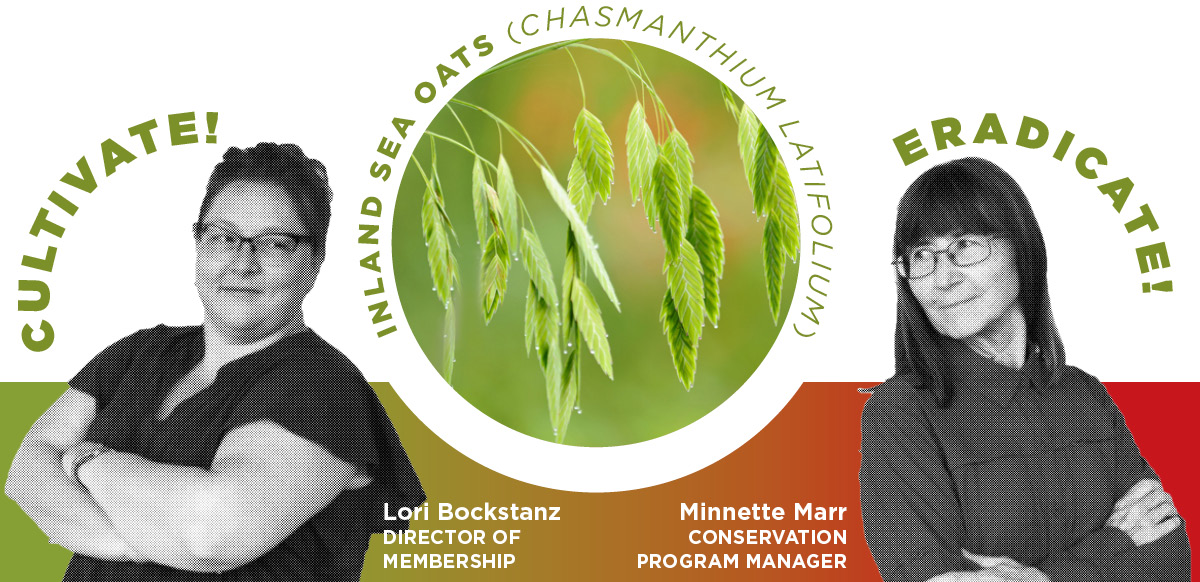Pull It or Plant It: Inland Sea Oats

LB: A native grass in many states, inland sea oats (Chasmanthium latifolium) has a lot going for it when it comes to visual aesthetics in the garden: lovely, dense greenery and pleasant, gentle movement in the breeze are two right off the top of my head.
Its broad leaves and arching seed heads offer more interest than thinner-leafed grasses and even add a hint of Asian influence, almost like bamboo — but not invasive (unlike commonly seen golden bamboo).
It’s easy to grow and maintain with very little work (other than annual cutback). Believe me, I do virtually nothing to mine, which inhabits a South Austin urban setting with no irrigation and is flourishing like a champ.
This is a great plant for shade or partial shade and helps stabilize ground in areas where soil erosion may be an issue (such as steep banks). And it’s relatively easy to pull up when it has spread too far. Bonus: The flat, oatlike seed heads can be cut and dried for use in indoor floral arrangements. They are truly very cool looking.
MM: Inland sea oats can outcompete nectar-producing wildflowers in areas with large deer populations. As the native wildflowers disappear, so will the pollinators that evolved with them, not to mention the tapestry of colors and textures they provide.
Inland sea oats is hard to control in small areas with loamy soils. It has the potential to grow too tall for some homeowner association landscape guidelines. And I’ve seen several coral snakes using inland sea oats for cover and habitat (I suppose you can look at this as a plus or minus).
Rather than planting a grass that occurs in many states, consider selecting local wildflowers that do well in your neighborhood’s natural areas. For instance, focus your search on wildflowers that thrive in combination with the trees in your yard.
Native wildflowers that naturally occur in shady areas — such as pigeonberry (Rivina humilis), scarlet sage (Salvia coccinea), Drummond’s wax mallow (Malvaviscus arboreus var. drummondii) and frostweed (Verbesina virginica) — will attract bees, hummingbirds and butterflies. And the results are more interesting and diverse than an unwieldy patch of inland sea oats.
ON THE OTHER HAND …
LB: If left unmanaged, inland sea oats could likely take over in an area with ideal growing conditions, which is probably why some people gripe about it.
MM: Inland sea oats is commercially available. Many native wildflower species are not (all the more reason to purchase plants from the Center during our native plant sales).

